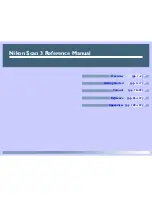
Overview
20
Director 2/140 Installation Guide
■
A customer-supplied PC platform with a network connection to the EWS
interface installed on the director.
■
A customer-supplied server platform communicating with the switch through
a LAN or corporate intranet. The HAFM applications are ordered and
installed on the server by the customer.
Error-Detection, Reporting, and Serviceability
The director provides the following error-detection, reporting, and serviceability
features:
■
Light-emitting diodes (LEDs) on director FRUs and the front bezel that
provide visual indicators of hardware status or malfunctions.
■
System and threshold alerts, event logs, audit logs, link incident logs,
threshold alert logs, and hardware logs that display director, Ethernet link, and
Fibre Channel link status at the HAFM appliance, remote workstation, or
EWS.
■
Diagnostic software that performs power-on self-tests (POSTs) and port
diagnostics (internal loopback, external loopback, and Fibre Channel (FC)
wrap tests). The FC wrap test applies only when the director is configured to
operate in FICON management style.
■
An internal modem for use by support personnel to dial in to the HAFM
appliance for event notification and to perform remote diagnostics.
■
Automatic notification of significant system events (to support personnel or
administrators) through e-mail messages or the call-home feature at the
HAFM appliance.
Note:
The call-home feature is not available through the EWS interface.
■
An RS-232 maintenance port at the rear of the director (port access is
password-protected) that enables installation or service personnel to change
the director’s internet protocol (IP) address, subnet mask, and gateway
address.
■
Redundant FRUs—logic cards, power supplies, and cooling fans—that are
removed or replaced without disrupting director or Fibre Channel link
operation.
















































